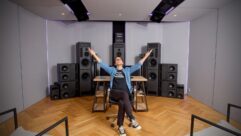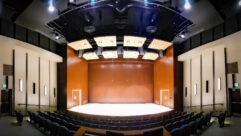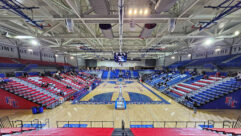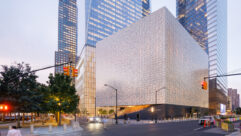On the SVC Podcast, Contributing Editor Bennett Liles talks with Adam Shalleck of The Shalleck Collaborative in Berkely, California regarding their role in the design and installation of a Meyer Constellation active acoustic system in the new performing arts center at Palo Alto High School. Adam discusses the principles of electroacoustics and how they were applied in rigging, wiring and speaker/microphone placement to bring this revolutionary active acoustic technology to the school.
The new performing arts center at Palo Alto High School is a real wonder with the ability to electronically change the venue’s acoustic environment to suit the show being done. Theatre planning and design firm the Shalleck Collaborative guided the complex process and its president Adam Shalleck is going to tell us all about it next on the SVC Podcast.
Adam, it’s certainly great to have you with us on the podcast from The Shalleck Collaborative in Berkeley, California to lend another practical aspect to the topic of active acoustics and creating immersive acoustic environments. Thanks for getting with us.
My pleasure. Thanks for the call.
Well, tell us about The Shalleck Collaborative. I’ve read a good bit about your firm there and it sounds like a very interesting place, but since your name is on it you’re probably the busiest guy there.
[Laughs] Yes. So I founded the company in 2003. I had been doing this for 15 years elsewhere, so this is year 15 and right out of the gate it’s been fantastic. We have a very, very broad range within theater and AV consulting so as the economies and interests of what people need move we’re right there with them. It gives us a lot of experience at a lot of different skills, and one of which, the subject here, is performing arts in education. [Timestamp: 1:32]
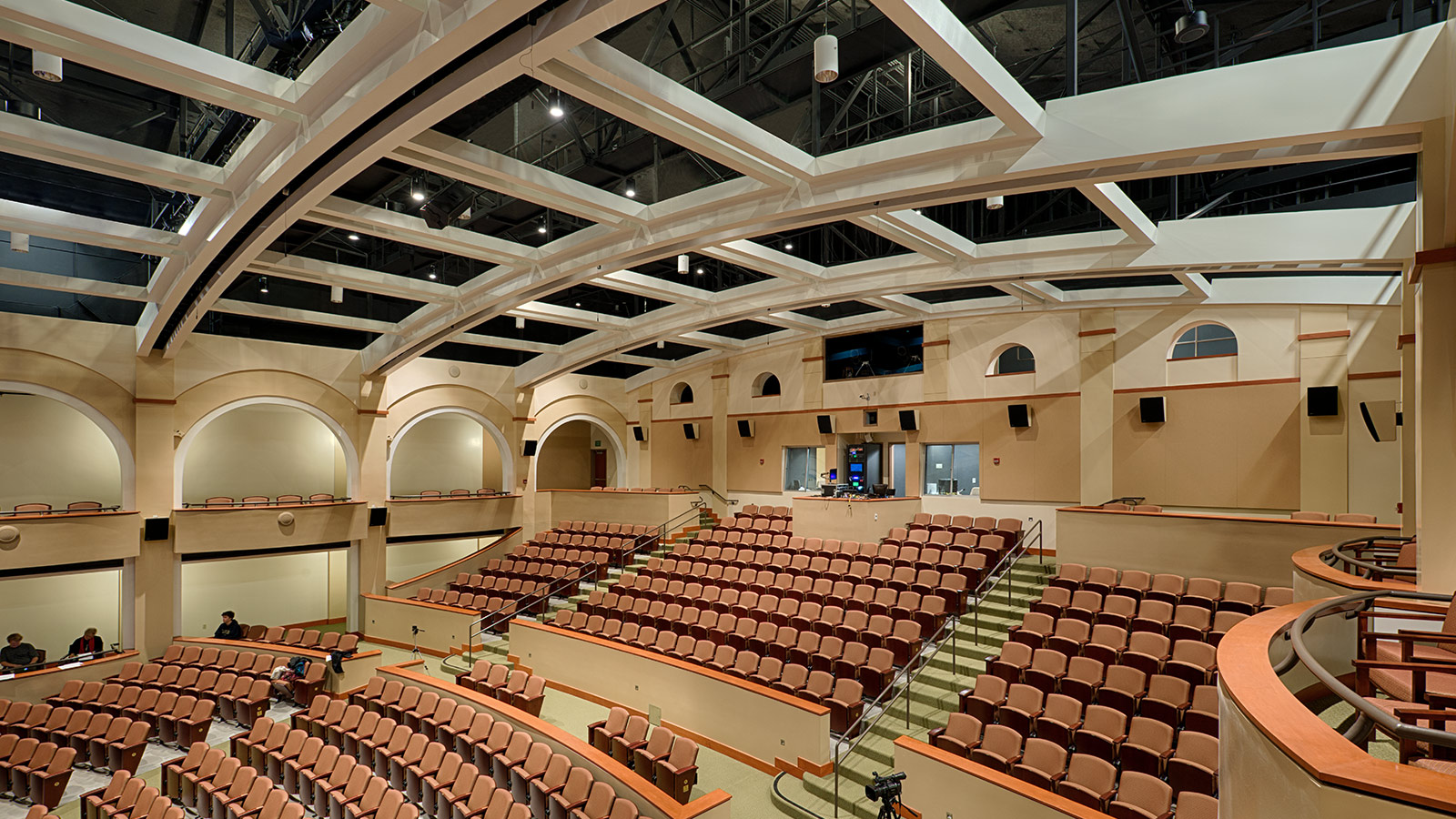
And there was quite a bit to do here. This sure isn’t your average high school AV installation project. Palo Alto High School is a remarkable place and it’s in a great, high tech area so you would expect that. They chose the Meyer Constellation system. Now, was this a particularly good venue for an active acoustics system installation? If so, what made it such a good candidate?
Yeah. So it’s very, very interesting. We speak a lot about electronic acoustic approaches in many, many different contexts. And we always want to be very careful about how we apply the various technologies – old ones, new ones, big ones, cheap ones, expensive ones. And if everything points in the right direction then it becomes absolutely the right thing to do and that was the case here. So it is a public high school – part of a district – but it’s there in the heart of Silicon Valley. And a lot of things aligned to make this the right choice, not the least of which was that they are comfortable in technology and they are well staffed to support it. And so those things, it’s not just can we put something in, but it is the right approach for the users? Can they handle it? It is technology. It is computing power that will evolve over time and will they have the bandwidth to deal with that. And they absolutely did and they sort of pulled the solution out of us because of the other aspects of wanting to achieve really good acoustic range within the budget. [Timestamp: 3:00]
I’ve seen plenty of images of it and this doesn’t look like what you would think of as a high school auditorium. It looks more like it should be in Hollywood or on Broadway so you had a lot to work with. To make an active acoustics system work right you have to have a good room for it so did that involve some conventional physical acoustic treatment to set the stage for Constellation?
Well, yeah. You know the things that go into the decision are wide-ranging. And when you’re starting with a new build, as this was, you have a lot of choices that you can make. Getting it ready for Constellation means a few things. One is that its native reverberation time is on the low end with the idea that you’re going to give over that range of reverberation to Constellation. Constellation can’t limit range so the room has to start with the limited range. The good news is that that means that the room, from a design standpoint, has a lot more flexibility in that the architect is not beholden to shapes and materials that manage the sound. But as long as things end up without spurious echoes and bad things and has a relatively low RT then it’s ready to go. That also can mean that the room volume doesn’t have to be as tall and as grand as you would in order to create the reverberation naturally. And so in that becomes a shorter building; and when a guy like me talks about a shorter building it probably also means that it’s less expensive on the construction side. [Timestamp: 4:30]
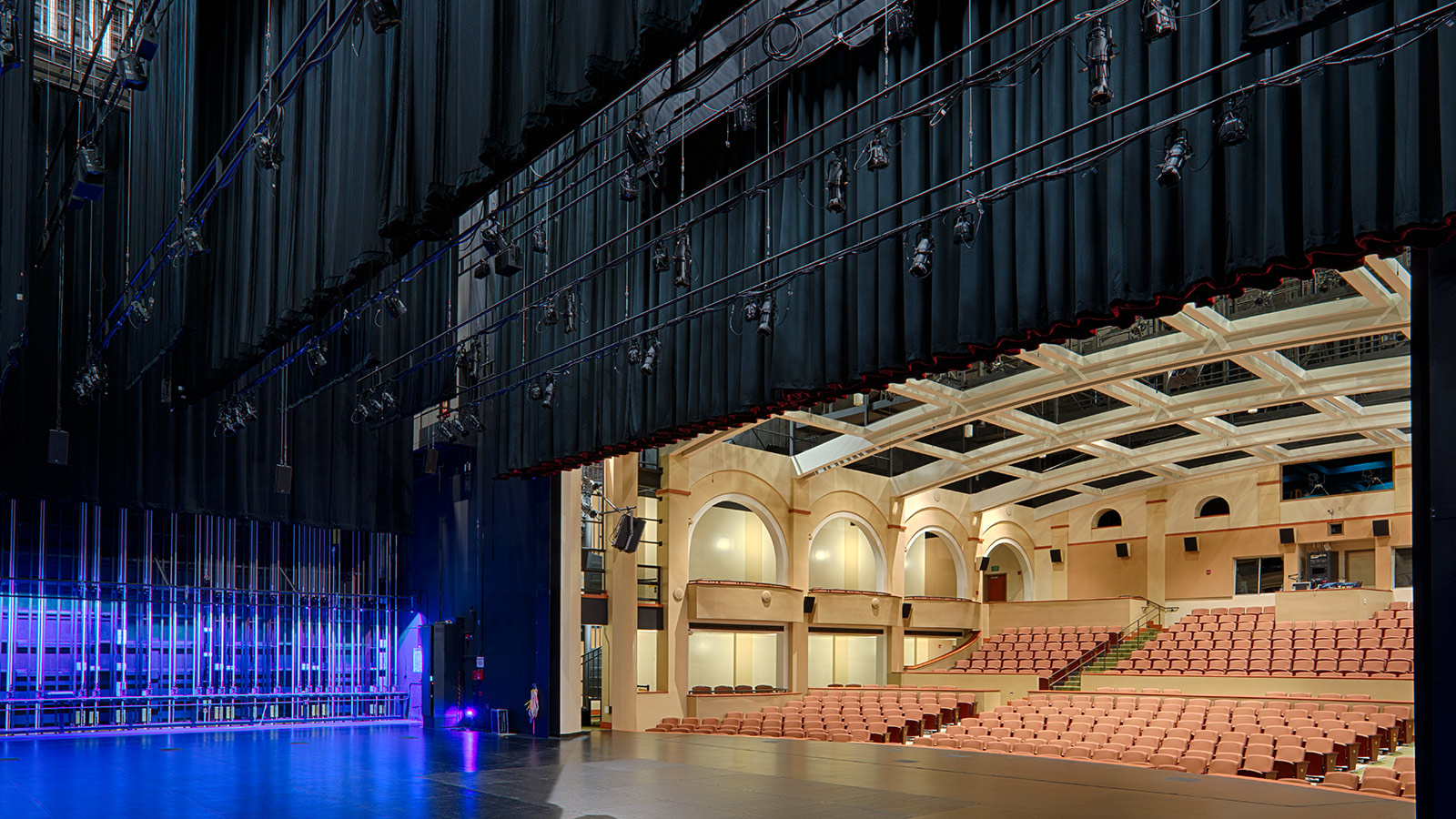
From what I’ve seen it appears that you started off with an idea for a larger building and then in the planning the volume was reduced so did the savings on construction costs result in the proposal for the Constellation system?
Exactly. Another factor. So if you look at the grand picture – so the localized picture is that it’s a technology that is not inexpensive. But if you look at it in the more grand scheme, at what the impacts can be, that result is that it may, in fact, be less expensive overall. Here’s why. When you start to gain the ambition, or you understand the ambition of the client to have a wide range of reverberation times because they going to be doing a lot of things in the room, your acoustician might say okay, well then I need to have the room create a lot of reverberation time naturally. And in order to do that I need X amount of large volume. In order to make that happen it needs to be X tall. Then you look at the context of the building and where you are – in this case a high school campus, mission style – there wasn’t a lot of place for a big, tall, hulking building. So there was a little bit of pressure there to keep the overall building height down. And as I said, if you translate your building into dollars – the building, if it can get smaller – the building costs are less impacted. So that, then, suggests that if we do it electronically it overcomes some of those overall cost challenges. [Timestamp: 5:53]
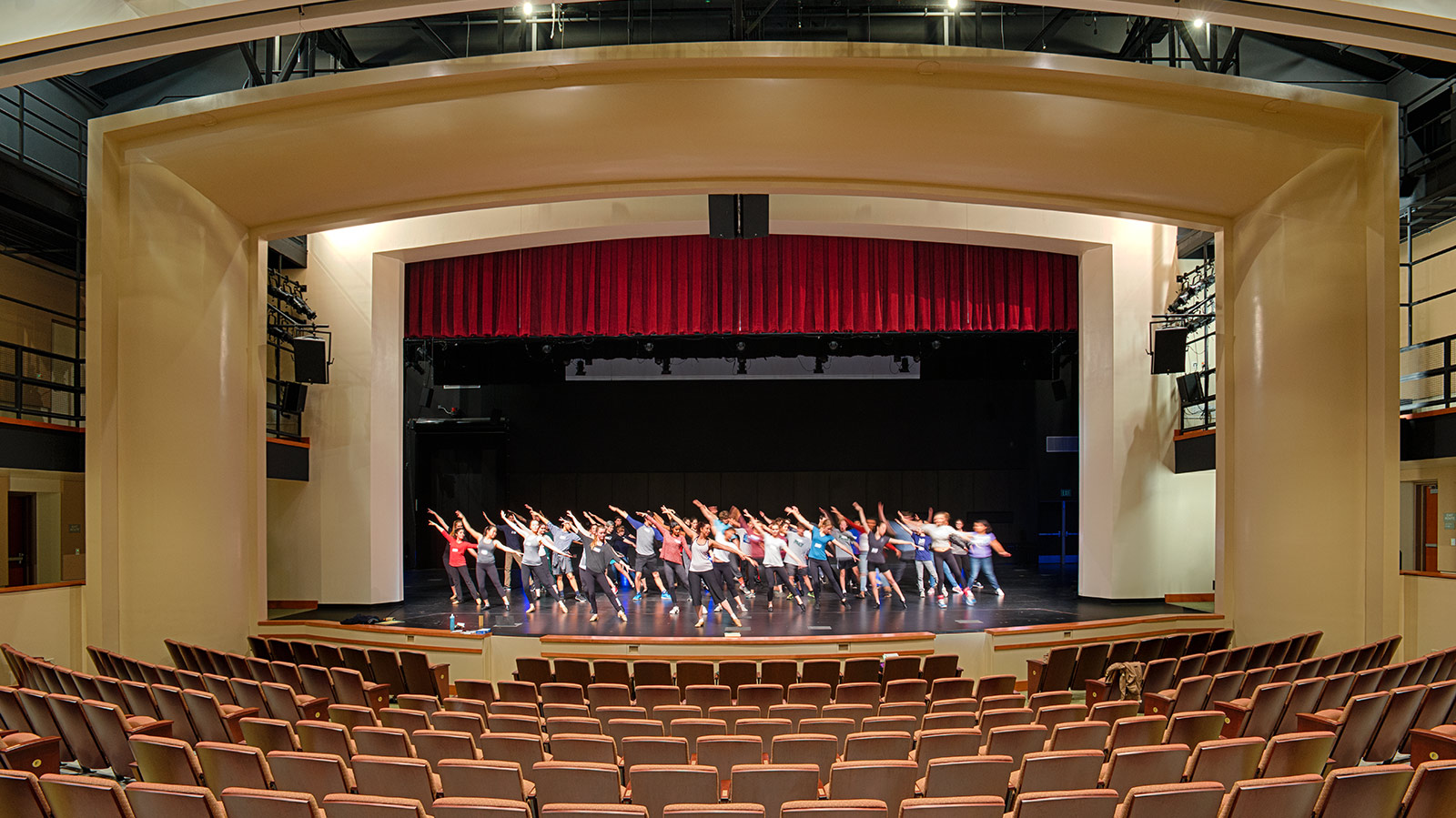
When you proposed an active acoustics system I would think that the decision makers there at the school would have to hear this thing to believe it so you set up some demos.
That’s right. The advantage of being right here in the Bay Area is that we have a lot of examples in the area and the Meyer Sound Labs demonstration theater, the Pearson, at their shop right here in Berkeley. [Timestamp: 6:15]
I think there was a simulation for an orchestra shell and that resulted in a sort of dual zone aspect. Can you explain for us how that worked?
Yeah. This is really, really interesting as well and has a lot of different tentacles to it. So as a multipurpose theater such as this, the other ambitions for musical theater and dance and the ability to arrange among all those performance types suggested a full flight tower. Well acoustically, for unamplified performances – choir and symphony and such – the flight tower is a bit of a liability. It’s cubic volume in all the wrong places. And so as has been done for years and years and years to mitigate that, one has a physical orchestra shell, traditionally, that does a few things; one of which is to cut off all that extra volume and connect the stage are where the musicians are acoustically to the volume where the audience is. The other thing that it does is allow the musicians to hear each other because it gives them more immediate reflections right there on stage. Constellation suggests that you actually don’t need, or actually don’t want, a building contributing too much to the acoustic environment so the zone on stage – mics and speakers and processing – is just as happy to be there without any separation from the rest of the flight tower. So there is no need acoustically for a large orchestra shell on stage, so one can say that’s more savings from a cost, time and storage standpoint. It also opens up all of those lighting positions and staging so that if they wanted to add more production impact to their concerts they have more ability to do that. And again, it’s entirely passive and unmixed actively so mics and speakers are set very quickly and turned on with the rest of the system and off you go. [Timestamp: 8:12]
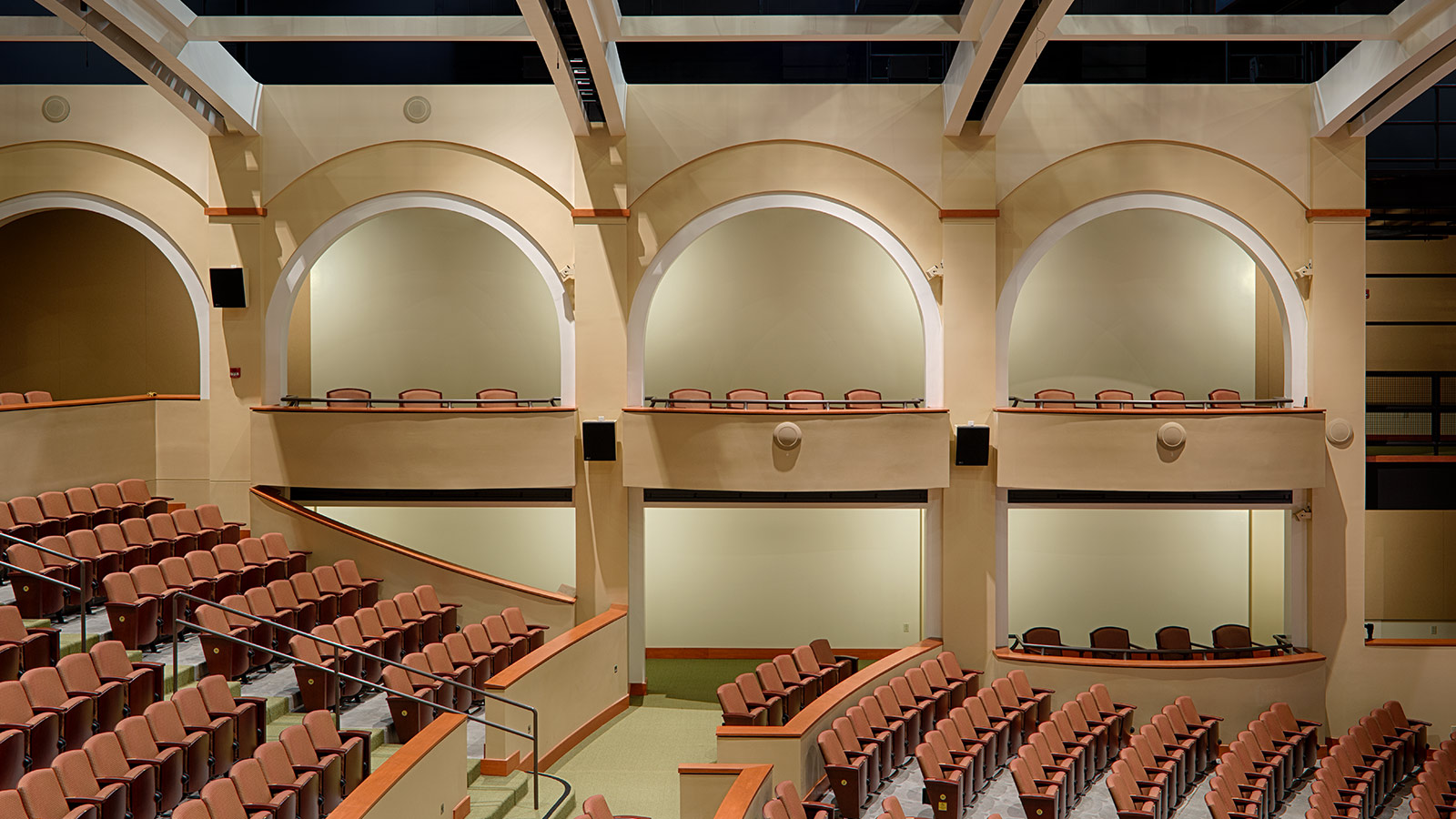
And that actually makes up two sound systems I think, on these. One that is more conventionally used where some components of the Constellation system are used in the conventional sound setup.
As one would, yeah. So the distinction needs to be made between Constellation as an acoustic system, which is to say it’s as if it was the building. You don’t microphone your performers. You don’t mix your performers. It’s happening, in that sense, passively from a use standpoint. But that doesn’t mean that in an amplified situation – so a lecture, a rock band, a pop band, musical theater work – those are still amplified traditionally with mains and active mic’ing and mixing as the show goes on. So they are, in fact, separate things overlaid. You might dial down the reverberation time for Constellation while you’re amplifying those things again so the person at the desk has control of what the audience is hearing. And yet in other applications where there are acoustic problems, hearing under a deep balcony for example, you can get Constellation to sort of help mitigate some of the buildings’ problems even in a fully-amplified situation. [Timestamp: 9:25]
· The Shalleck Collaborative – Planning and Design of Theatres, Production Systems, AV
· The Meyer Sound Constellation active acoustics system
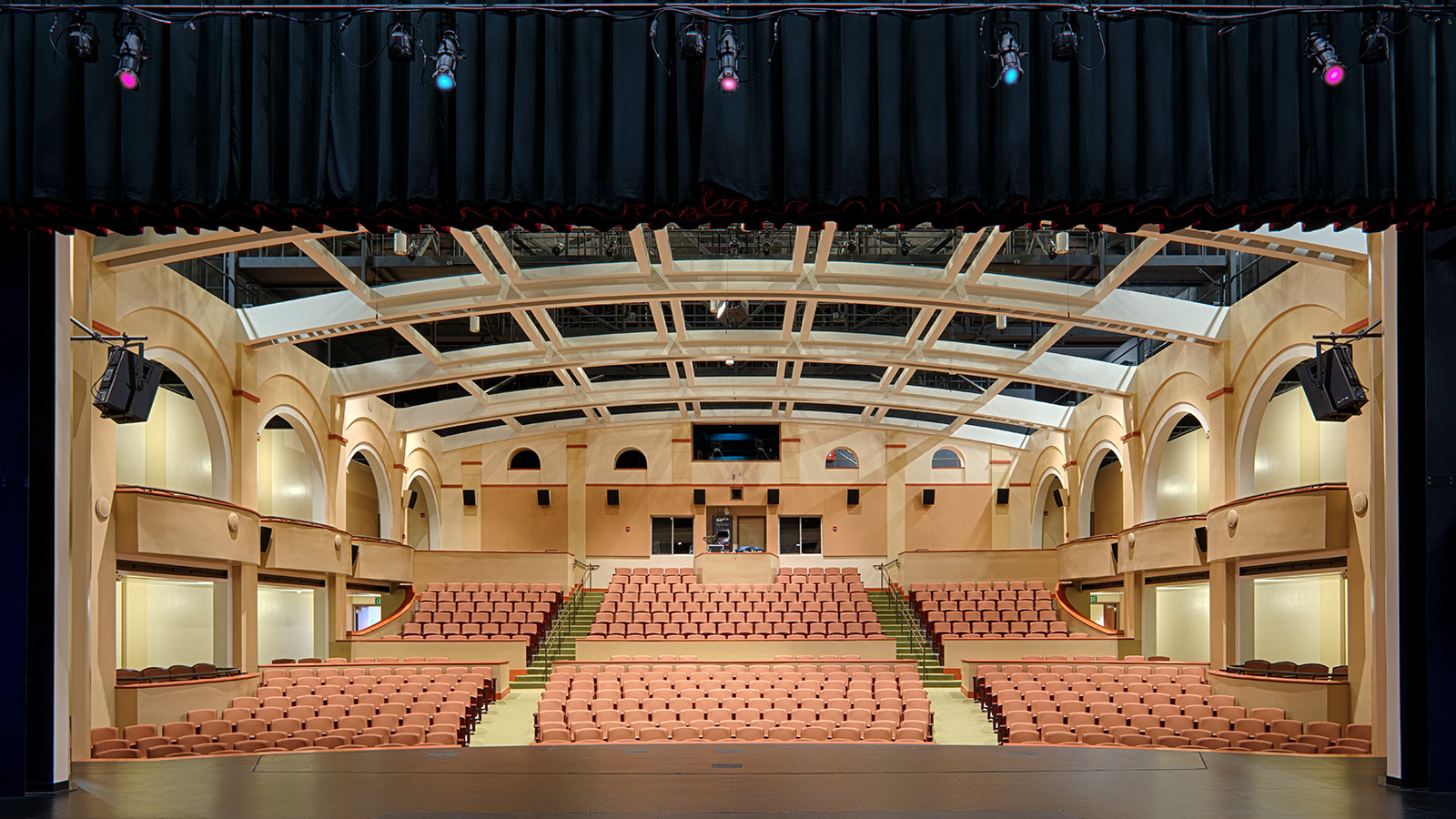
Since you have that many speakers and microphones, it’s not a simple or quick and easy installation. It would seem to be pretty heavy on cabling as well. Did that require you to have any special arrangements with the construction people?
You are correct that the infrastructure required to get that many devices connected is significant. It is, however, the same low voltage world as the rest of the AV system. So what we tend to do when we put Constellation in and we’re handling both the rest of the AV system and Constellation is that it’s documented in the same drawing set as the balance of the AV system. The connections are shown on the drawings so they’re coordinated with the electrical engineers as to route and quantity and wire ways and such, much the same way as the rest of the AV. So that, in turn, gets installed in its entirety along with the rest of the system by the AV integrator, the AV subcontractor. [Timestamp: 10:23]
Something that is interesting in the house images is what I believe is called the acoustic porch. I saw the Yamaha LS9 mixer there. Are all of the sound, video and lighting controlled from that one place?
The mixing happens there, yes. Again, Constellation is hands-free. There is the preset control button at that porch, so that mix porch puts the sound mix operator in the same acoustic environment as the audience. So when they’re actively mixing things therefore it happens to then be where that individual can make the choice to change the RT by hitting the preset panel. The electronics themselves are with other AV gear off in an isolated equipment room. [Timestamp: 11:06]
So you have out there only what the operator needs and I can imagine how impossible it would be to try and mix for this system from anywhere other than out in the middle of the house.
That’s right. As soon as there’s any complexity involved with the number of sources that operator needs to be in the same environment. Absolutely.
So The Shalleck Collaborative went in there and did their thing and led the way on the design. Now it’s done and I’m sure you had some fun demoing it for various people. So do you have other Meyer Constellation system projects coming up?
We do. And you’re correct. I wanted to add one thing. I actually did a demo just last week for some new clients who are just getting underway thinking about what theater they might build and how it might be equipped. And we had just been at a different theater that handled their acoustic solution with physical acoustic elements. And the orchestra shell at that other theater was in place. There happened to be a lovely choir on stage that sounded absolutely beautiful. But the client’s reaction was sort of visceral in that they saw this large thing on stage and they were sort of taken aback by the sheer physicality of it. Then when we went over to Palo Alto, that stage at that moment was also set up for a concert but it was a black stage with – and I had to point it out because they’re nearly invisible – mics and speakers hanging in place. And the reaction was it’s certainly much easier to physically operate this thing because there are just fewer items to manage and move. They did equate that also to – they figured it was less expansive not to have that big object. I’m not quite sure it’s exactly that case. These are just different applications and different solutions. [Timestamp: 12:45]
Well, I’m sure that while they’re sitting in the house looking at the stage it looks more expensive.
[Laughs] That’s right. They’re not seeing Constellation. They’re hearing it. I took them through the paces before I told them what it was and what had happened and they were amazed as all are when you can see this huge range of acoustic conditions happening at the press of a button. It’s quite impressive. We do have other installations that we’re working through, other schools. We’re just finishing something up in San Diego right now. And then another very interesting one in what originally was a Vaudeville house – on old movie palace. Very, very large. Thousands of seats. Very grand and built before the understanding of acoustics existed. It was, again, a very simple use at the time – big, dumb speakers behind a picture screen. But instead of losing that room to the world of architecture and being able to preserve something yet allow it to have a newfound acoustic capability, again electronic acoustics is a very, very good application to sort of solve problems and allow them to have a broader range for what they can do there. Not just there for – not only make the symphonies sound better, but be able to get wider range of things that can happen in there in an excellent way. [Timestamp: 14:05]
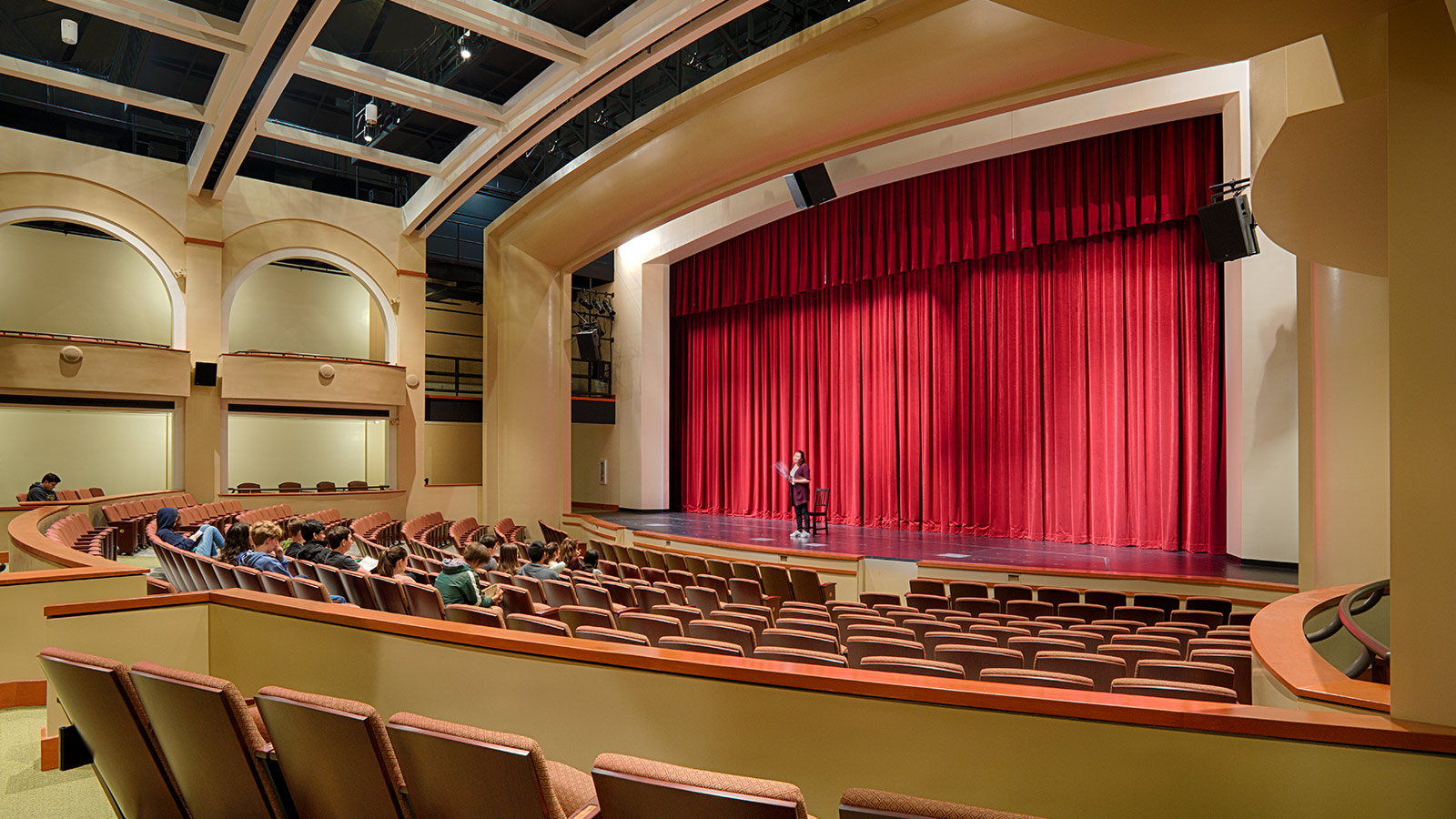
It’ll be a challenge with a building that was in no way ever designed for this and it would be tougher to make a big building sound small and relatively easy to make a small house sound big. We may want to get back together when you have this one done.
It is really, really interesting. One other marvelous thing about it is that because we do need to bring the natural reverberation time down so that Constellation can do its thing, we turn that as an opportunity and get to reintroduce these beautiful, historic, drippy, decorative draperies that originally were in the building for somewhat acoustical need but also just as part of the décor of the room. Those were taken out, but we were using that as part of our acoustical solution to absorb extra RT that we don’t need in there. So the audience gets to see some of the benefit of Constellation as well as hear it. [Timestamp: 14:55]
That’ll be a remarkable experience as I know this one was. The performing arts center at Palo Alto High School and the revolutionary Meyer Constellation active acoustics system. The installation designed by The Shalleck Collaborative who then had the fun of watching it work.
Absolutely. Thanks for raising the topic. It really has added a whole new dimension to the kinds of conversations that we have about providing excellent acoustics in multipurpose environments.
Okay, Adam. Thanks for being with us.
My pleasure.
It was a great opportunity to hear from Adam Shalleck about how this fantastic performing arts center at Palo Alto High School was designed and how its Meyer Constellation system was installed. Get back with us for more conversations with AV experts about their latest projects on the SVC Podcast.


